This was my morning skincare routine today. It’s all explained in detail here.
Even if you don’t have the same skin type or issues as me, or prefer to use other brands, I go over how I layer my products (the sequence and rationale for each step), how I spot treat my different issues, and essential steps that you should be following regardless of your skin type. Plus I comment on why I like these products.
This is an AM anti-aging routine for autumn weather for a Normal skin type with the following skin conditions:
- hyperpigmentation on the cheeks
- fine lines around eyes
- loss of firmness on lower cheeks,
- minor expression lines on forehead
- normal amount of dehydration
1. HYDRATING TONER – Bioelements Power Peptide Toner (all over face)
I always start off with a hydrating toner. There are so many benefits, which I have talked about many times in the past and you can read about here. Some people think it’s unnecessary since hydrating ingredients can be incorporated into other products, such as serums or essences. And true, you can of course hydrate your skin that way.
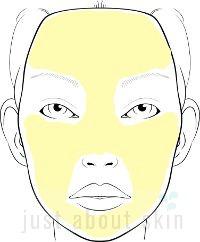 But even if your serum contains hydrating ingredients, prepping your skin first with a hydrating toner will allow all the products you use afterward to absorb better and apply more smoothly. It just makes the whole process of applying skincare easier.
But even if your serum contains hydrating ingredients, prepping your skin first with a hydrating toner will allow all the products you use afterward to absorb better and apply more smoothly. It just makes the whole process of applying skincare easier.
It also saves product, so you can stretch out the life of your more expensive serums and moisturizers. They will last longer since you need less. If your skin is dehydrated when you apply a serum without prepping first, you’ll end up using more serum. This is wasteful, since skin doesn’t need that much serum. Only a certain percentage of ingredients will end up penetrating.
In this toner step, I rotate among different toners. They’re more or less the same (their main job is hydrating). What I choose just depends on what texture I am looking for. The small differences among my toners are the focus ingredients. Beyond hydrating, toners can specialize in treating a concern, such as exfoliating and brightening.
- This one by Bioelements has peptides and is lightweight (great for summer especially). I reach for this when I want to pack in more anti-aging oomph.
2. VITAMIN C SERUM – Lira Clinical Hydra C Serum (all over face)
A Vitamin C serum is VERY useful. I would even go so far as to say it’s essential. But some people can’t afford to incorporate a treatment product into their routine. Or their skin is compromised. So I call this a highly recommended type of product.
 A Vitamin C serum is great day or night. Vitamin C always needs to be replenished. It gets used up fast, and the body doesn’t store it. But if you only want to use it once a day, then AM is the better choice. As an antioxidant, Vitamin C will quench the free radicals that bombard your skin during the day.
A Vitamin C serum is great day or night. Vitamin C always needs to be replenished. It gets used up fast, and the body doesn’t store it. But if you only want to use it once a day, then AM is the better choice. As an antioxidant, Vitamin C will quench the free radicals that bombard your skin during the day.
- This serum by Lira Clinical is my favorite (tied with Lira’s Pro C4 Retinol Serum, which is the same serum but with retinol added). You can read why I love both here. My favorite aspect of this serum is how easy it is to apply – everything about it, from pumping it out to spreading it over skin, is smooth and effortless.
- Anyone can use this, and it’s reasonably priced for a professional product ($58-$60 for 2 oz). In fact, it’s more than that. It’s a terrific value.
3. SPOT TREATMENT #1 – Lira Clinical Lite Serum (dark spots on cheeks)
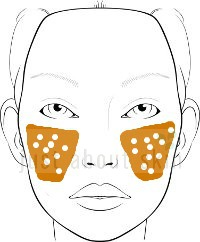
I have some hyperpigmentation on my cheeks. It’s very stubborn – hard to lighten and the pigment returns easily. So I am always keeping the spots in check (so that they don’t get darker or bigger). The nature of my spots (dermal pigment) requires a laser treatment, but until then, I treat them topically with lightening treatments.
- Lira’s lightening treatment is new to my cabinet. So far, I am liking the results. My spots have gotten lighter.
- This treatment is also sensorially pleasing. Unlike most lightening treatments which might not feel or smell good, this one is actually a pleasure to apply. It’s emollient and soft on skin.
4. SPOT TREATMENT #2 – Circadia By Dr. Pugliese Myo-Cyte Serum (glabeller lines, forehead lines)
Expression lines appear as you get older. And they get deeper and more visible. I have the beginning of one glabeller line (the eleven’s between the eyebrows) and faint forehead lines.
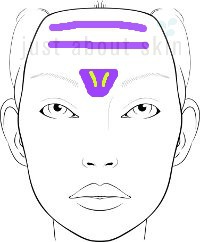 One easy way to fix this is to get Botox. But I don’t need that now or want that later. My goal is to go for as long as possible without any cosmetic procedure! I am actually hoping to age gracefully into old age without any medical intervention at all. But who knows, when my face falls apart later, I might be singing a different tune 🙂
One easy way to fix this is to get Botox. But I don’t need that now or want that later. My goal is to go for as long as possible without any cosmetic procedure! I am actually hoping to age gracefully into old age without any medical intervention at all. But who knows, when my face falls apart later, I might be singing a different tune 🙂
So if you don’t want Botox, or you don’t need Botox yet (i.e. the lines aren’t deep enough), then you can treat them topically with treatments containing neuropeptides. Neuropeptides relax muscle contractions (just like Botox), which slows down the formation of expression lines. It is better to get started early. Once the lines get deep, topical treatments can’t help. And you need to use them consistently to maintain results.
- Circadia’s Myo-Cyte is my alternative to Revision Skincare’s Revox II Serum. If you’ve been following my product posts, you may remember that Revox is one of my favorite products, my holy grail for expression lines. I rotate between these two serums mostly.
- Myo-Cyte is a thicker gel, so I like to use this more in the fall/winter months.
5. SPOT TREATMENT #3 – Circadia By Dr. Pugliese Cyto-Comm Serum (jowl area, nasolabial folds)
My newest focus area is my jowls. I am seeing changes in its firmness. There is more laxity now (less bounce-back). I was expecting this, but maybe not this soon!
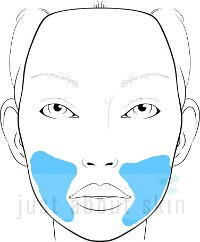 To minimize further loss of elasticity and future sagging in this area, I am doing two things differently in my routine:
To minimize further loss of elasticity and future sagging in this area, I am doing two things differently in my routine:
1. applying serums/treatments that firm or improve cellular processes involved in skin damage.
2. applying a firming moisturizer to this area (a different moisturizer from the rest of my face).
It’s more work to apply products to different sections of the face. But I don’t mind at all and think it’s worth it in the long run.
- You can read more about Circadia’s Cyto-Comm Serum in a recent post here.
6. EYE SERUM – iS Clinical C Eye Serum (upper and lower eyelids)
An eye serum is not absolutely necessary, but it’s great to have, if you can fit it into your skincare budget. I have a few fine lines under my lower lids (they’re thin and webby when you look up close). So to me, a Vitamin C eye serum is an extra way to boost collagen synthesis in that area, not to mention provide antioxidant protection.
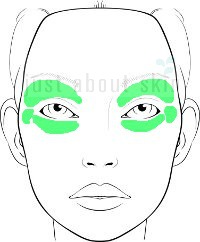 So build more skin and prevent further damage.
So build more skin and prevent further damage.
- There aren’t too many Vitamin C eye serums in a liquid format like this one by iS Clinical. So when I discovered it, it instantly became one of my staples (and favorite products).
- I have already talked about this eye serum here, but what’s worth mentioning is how economical it is. The serum is a loose liquid. One small drop is all you need for both eyes. If you only need 1-2 drops each day, imagine how long it will take to use up all the liquid in the bottle. The bottle lasts a LONG time.
- iS Clinical is one of the more expensive medical lines, but this product is priced attractively at $56 for 0.5 oz. To me, it is one of the best buys in the line. If you can’t afford isClinical’s other serums, take a look at this one. It’s worth it!
7. EYE CREAM – iS Clinical Youth Eye Complex (upper and lower eyelids)
If you’ve been paying attention to the steps so far, note how I’m at the eye cream stage, but I haven’t reached moisturizer yet. There’s a reason for that, which I discuss in the Layering Products article.
 Basically, if you apply moisturizer before eye cream, some of the moisturizer may reach the eye area. Your eye cream will be less effective if there is moisturizer already on the skin. Eye treatments are expensive. You don’t want to waste it. Let your eye treatment penetrate the skin first.
Basically, if you apply moisturizer before eye cream, some of the moisturizer may reach the eye area. Your eye cream will be less effective if there is moisturizer already on the skin. Eye treatments are expensive. You don’t want to waste it. Let your eye treatment penetrate the skin first.
- iS Clinical Youth Eye Complex is a fantastic eye cream. Terrific ingredients and texture. Of note, Copper Tripeptide Growth Factor and Hyaluronic Acid in microspheres. These microspheres blow up likes sponges once inside skin, increasing the capacity of skin to hold onto water. So it hydrates even more than regular hyaluronic acid.
- My current favorite eye combo is the C Eye Serum with Youth Eye Complex. Even better is when I add Youth Serum for tightening. The trio is a knockout regimen for the eyes.
- YEC is not the richest eye cream out there, but it provides sufficient emollience. I find that when it’s layered over an eye serum, it’s enough for me. When my eyes get drier in winter, I add a 2nd eye cream to the eye area an hour later.
8. BARRIER REPAIR TREATMENT – Dermalogica Barrier Repair Cream (around the nostrils, inner corners of eyes)
As I have written about before, my nose suffers from constant nose blowing. What a high-maintenance nose I have!
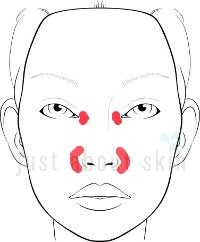 In the crease of my nostrils are visible capillaries (webby blood vessels) and redness. If I have to blow my nose a lot, the skin there gets irritated. So this is when I apply a barrier repair cream to the area.
In the crease of my nostrils are visible capillaries (webby blood vessels) and redness. If I have to blow my nose a lot, the skin there gets irritated. So this is when I apply a barrier repair cream to the area.
A barrier repair cream soothes skin and prevents water loss so skin doesn’t get dehydrated. When irritated skin gets dehydrated, it becomes more irritated.
- Dermalogica’s Barrier Repair is a silicone-based cream that feels like a makeup primer (but more ointment-y). It’s anhydrous, meaning there’s no water in it. The silicone ingredients provide an occlusive layer that slows down the evaporation of water.
- I apply a tiny bit to the inner corners of my eyes sometimes because this area can get irritated by eye treatments.
9. ANTIOXIDANT MOISTURIZER – Sesha Skincare Advanced Antioxidant Cream (all over face except nose)
Here it is – the moisturizer. Right before sunscreen. It’s autumn in the U.S. now, which means my skin craves creams (rather than lotions). Also, I will be outdoors later. So my skin needs extra nourishment in the cold air.
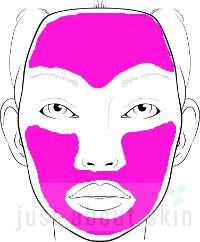 A moisturizer can be packed with various ingredients. I use different kinds. On some days, it’s an antioxidant moisturizer like this one. One other days, it’s a brightening moisturizer. Some days, it’s a peptide-rich moisturizer.
A moisturizer can be packed with various ingredients. I use different kinds. On some days, it’s an antioxidant moisturizer like this one. One other days, it’s a brightening moisturizer. Some days, it’s a peptide-rich moisturizer.
- Sesha’s Antioxidant Cream has a bunch of anti-aging goodies: a proprietary complex that reduces collagen breakdown, Argireline peptide, alpha lipoic acid, CoQ10, carnosine, Vitamin C & A, E
- It is a rich cream best suited for normal, dry, or mature skin.
- I don’t put this on my nose because it’s too heavy (clogs my pores there). I leave my nose alone because it gets enough moisture from the toner, serum, and sunscreen.
10. EYE SUNSCREEN – NIA24 Sun Damage Prevention 100% Mineral Sunscreen SPF 30 (around eyes only)
My eyes are easily irritated by chemical sunscreen ingredients, such as Avobenzone, Octinoxate, and Oxybenzone. While I sometimes use chemical sunscreens on the rest of my face, my eyes only get mineral (physical) sunscreens.
 Furthermore, when I select a mineral sunscreen for my eyes, I look for something thick so that it won’t run into my eyes. A cream is better than a liquid. I also look for a high percentage of Zinc Oxide or Titanium Dioxide.
Furthermore, when I select a mineral sunscreen for my eyes, I look for something thick so that it won’t run into my eyes. A cream is better than a liquid. I also look for a high percentage of Zinc Oxide or Titanium Dioxide.
- This mineral sunscreen by Nia24 is the one I use the most right now. It is a thick cream (compared with other sunscreens, but not thick for a regular moisturizer). It is emollient while still being easy to spread.
- If you look for this, be careful not to choose the chemical (Avobenzone) version by this brand, called Sun Damage Prevention UVA/UVB Sunscreen SPF 30. The packaging is virtually identical for both sunscreens. You have to read the name on the label. Even the names are similar.
11. FACE SUNSCREEN – Dermalogica Skin Perfect Primer SPF 30 (all over face, except eyes)
My face sunscreen. Almost always a mineral sunscreen. The only time I use a chemical (Avobenzone) sunscreen is when I’m indoors all day. Why even bother to switch? Because chemical sunscreens feel better!
 Skin Perfect Primer by Dermalogica is called a primer, but it’s really a sunscreen with a tint. The tint doesn’t change the color of skin. It’s there to even out the skin tone and provide a tiny bit of healthy color. I don’t use it as a makeup primer (it’s too thick for that).
Skin Perfect Primer by Dermalogica is called a primer, but it’s really a sunscreen with a tint. The tint doesn’t change the color of skin. It’s there to even out the skin tone and provide a tiny bit of healthy color. I don’t use it as a makeup primer (it’s too thick for that).- This one is silicone-based, so it’s super easy to apply. It just glides over skin. No need to wait for it to absorb. Matte, smooth finish.
- I love this product. It’s one of my travel essentials because it’s such a slender and lightweight tube. And versatile – it doubles up as BB-cream-ish makeup (because of the tint), and it’s soothing if your skin is irritated (because of the silicone ingredients).
12. NECK SUNSCREEN – Dermalogica Solar Defense Booster SPF 50 (neck)
Last but not least, sunscreen for the neck. Unless I am wearing a turtleneck and not going outside at all, I always put sunscreen on my neck.
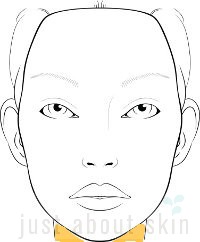 In the summer or when I’m in the sun for long periods, the sunscreen will always be a high SPF, high Zinc % mineral sunscreen.
In the summer or when I’m in the sun for long periods, the sunscreen will always be a high SPF, high Zinc % mineral sunscreen.
In the winter or if I am mostly indoors, I opt for a chemical sunscreen, which is lighter and quicker to spread.
- Dermalogica Solar Defense Booster is a chemical sunscreen (Avobenzone). It can be added to moisturizer to give it some SPF protection. Or it can be applied solo to skin.
- If you travel a lot, note the small bottle size. It’s a great size for travel or your daily work bag. Most sunscreens are larger and bulky.
All together, 12 steps. It may seem like a lot, but these products are going to different parts of the face and neck. So it’s not 12 layers of products over the whole face. That would be a disaster!
This is also an anti-aging routine for a proactive person. (I am on the far end of the spectrum – highly invested.) If you’re low maintenance about your skin, or not that focused on aging, you can of course keep the routine simple. You should also keep your routine simple if you are naturally sensitive, breakout-prone, experiencing ongoing skin issues, or recovering from any kind of trauma or procedure.
If you want to layer multiple products but are unsure of how to do it or whether it’s too much for you, read the article on Layering for tips on how to do it safely.
Like any habit, once you do it many times, you do it quickly and without any thought. Once you get used to applying different products, you won’t think it’s work. It’ll come naturally to you.
Further Reading:
Want posts delivered straight to your inbox? Sign up for the weekly newsletter here.

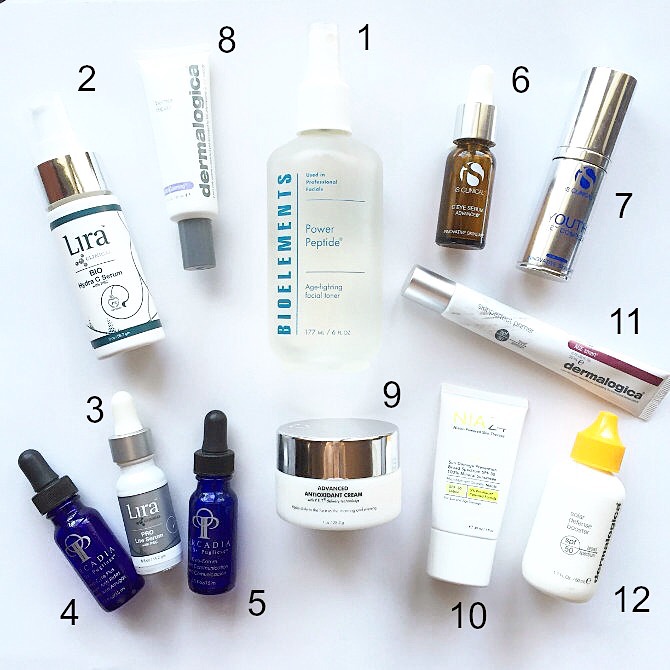
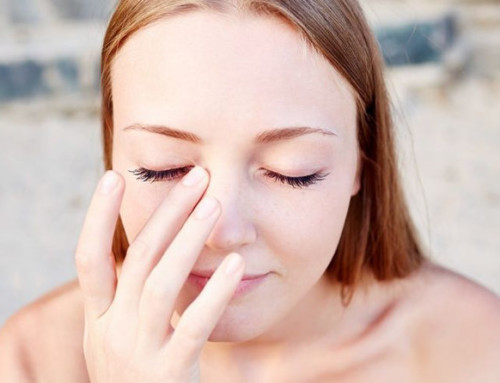
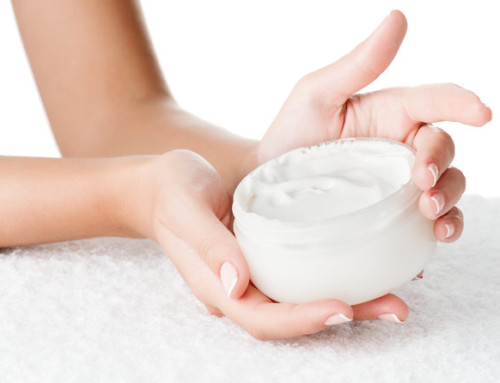

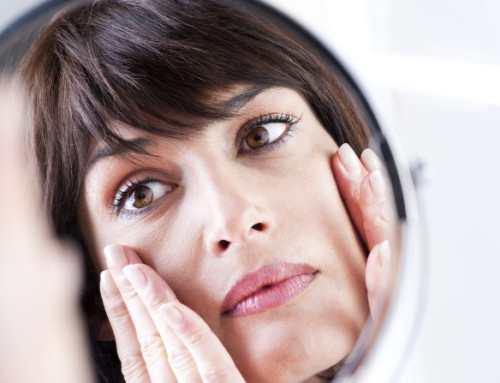
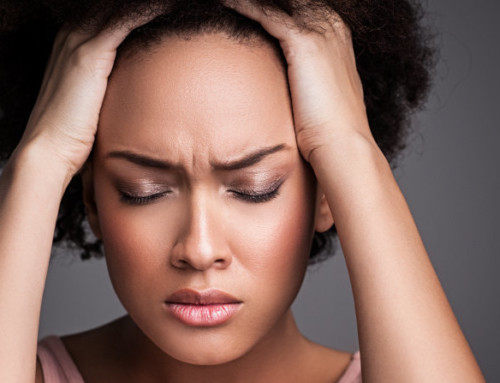
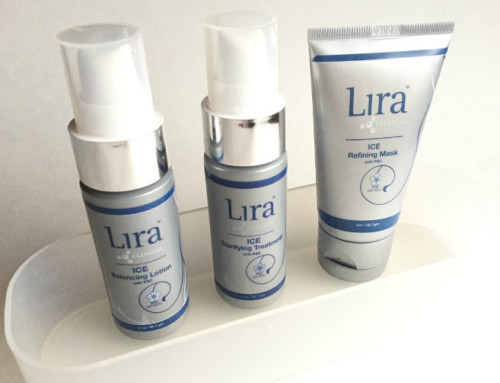

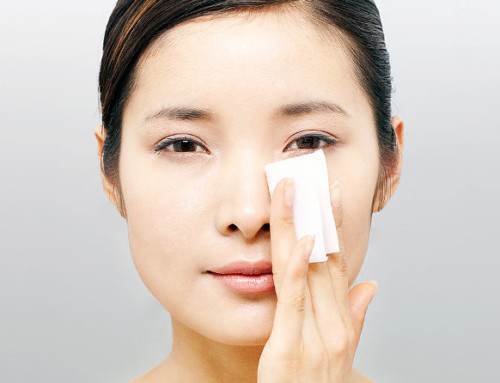
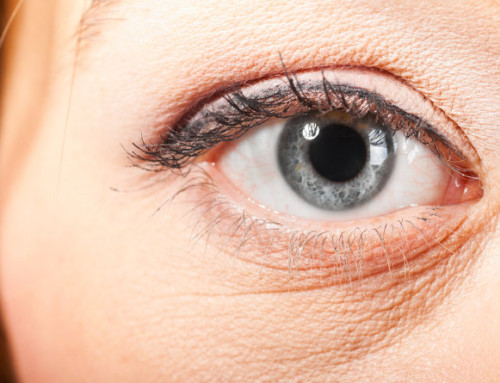
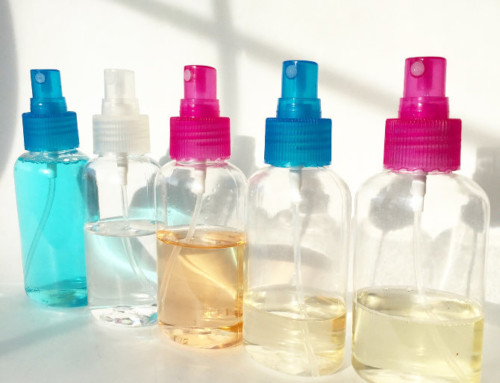
Hi,
Have you tried the Sesha Complex C Serum for the wrinkles and line? I can send you one to try.
Phyllis
Hi Phyllis, I have tried the Clinical Complex Serum 🙂 It’s featured in this post: What To Look For In A Vitamin C Serum. Thank you very much for offering to send it to me. I haven’t tried your other C Serum, Super C Serum. If you would like me to try that one, I would love to!
Rita